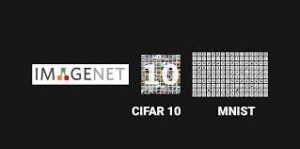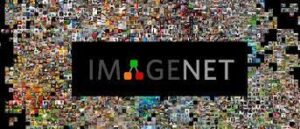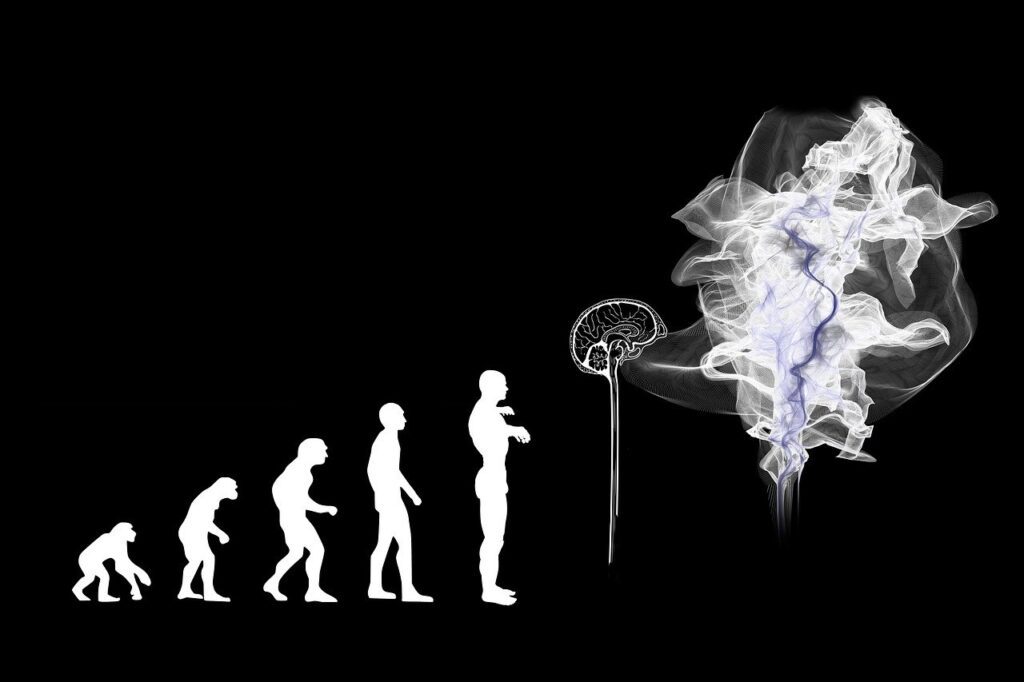Unveiling the Power of the best ImageNet Dataset: Exploring the Impact and Potential Across Industries

The digital world is powered by images, and the ImageNet dataset stands at the forefront of this image revolution. As industries increasingly harness the potential of artificial intelligence and machine learning, understanding the profound impact of ImageNet has become more critical than ever. Across sectors, from healthcare to automotive, the expansive ImageNet dataset is driving innovation, unlocking new applications, and reshaping the possibilities of visual recognition technology. In this article, we delve deep into the transformative influence of the ImageNet dataset, exploring its implications across diverse industries and shedding light on the untapped potential it holds.
Whether it’s enhancing medical diagnoses through image analysis or enabling autonomous vehicles to navigate with heightened precision, the ramifications of ImageNet reverberate far and wide. Join us as we unravel the dynamic ways in which this monumental dataset is propelling industries toward a future where visual data takes center stage, reshaping the very fabric of technological advancement.
Evolution and Impact of ImageNet Dataset
The evolution of the ImageNet dataset has been nothing short of revolutionary. It has not only provided a vast collection of labeled images but has also fueled the advancement of deep learning algorithms. The availability of a diverse array of images has significantly contributed to the development of image recognition and classification models. This has led to a paradigm shift in how machines perceive and interpret visual data, paving the way for applications across various domains.
The impact of the ImageNet dataset extends beyond the realm of computer vision and deep learning. Its influence can be seen in the rapid progression of image-based technologies, from content moderation and recommendation systems to augmented reality and virtual try-on experiences. The dataset has acted as a catalyst for innovation, inspiring researchers and developers to explore the uncharted territories of visual data analysis and utilization.
The democratization of visual data through the ImageNet dataset has empowered businesses and organizations to leverage image-centric solutions for a myriad of purposes. From enhancing user experiences to streamlining operational processes, the dataset has permeated through industries, fostering a new era of image-driven applications and services.
ImageNet Dataset in Computer Vision and Artificial Intelligence
In the realm of computer vision and artificial intelligence, the ImageNet dataset has become the cornerstone of research and development. It has fueled the training of convolutional neural networks (CNNs) and deep learning models, enabling remarkable progress in object detection, image classification, and semantic segmentation. The dataset’s extensive collection of labeled images has provided a fertile ground for training models to accurately interpret and comprehend visual content, leading to breakthroughs in image recognition and understanding.
The widespread adoption of ImageNet in computer vision has catalyzed advancements in facial recognition, scene understanding, and image synthesis. These developments have transcended traditional applications, permeating into areas such as video analysis, gesture recognition, and anomaly detection. As a result, the boundaries of what machines can perceive and interpret visually have expanded, opening doors to a multitude of innovative applications and solutions.
The integration of ImageNet into the fabric of artificial intelligence has ushered in a new era of visual intelligence, where machines can not only recognize objects and scenes but also infer contextual information and make informed decisions based on visual input. This has profound implications for industries seeking to capitalize on the power of visual data for enhanced automation, personalization, and efficiency.

ImageNet Dataset in Healthcare and Medical Imaging
The impact of the ImageNet dataset in healthcare and medical imaging cannot be overstated. With the proliferation of medical imaging data, the dataset has played a pivotal role in advancing diagnostic capabilities, disease detection, and treatment planning. By training models on a diverse range of medical images, the dataset has empowered healthcare professionals with sophisticated tools for identifying anomalies, predicting outcomes, and personalizing patient care.
In the field of radiology, the integration of ImageNet-derived models has led to significant improvements in the detection of abnormalities, such as tumors, fractures, and lesions. The ability of deep learning models to analyze and interpret complex medical images has augmented the diagnostic accuracy and efficiency of healthcare practitioners, ultimately leading to better patient outcomes and reduced diagnostic errors.
Furthermore, the utilization of ImageNet in medical imaging has extended beyond diagnostic applications, encompassing areas such as surgical navigation, medical robotics, and telemedicine. By leveraging the dataset’s rich repository of annotated medical images, researchers and developers have been able to create intelligent systems that assist in surgical procedures, automate repetitive tasks, and facilitate remote consultations, thereby enhancing the accessibility and quality of healthcare services.
ImageNet Dataset in Autonomous Vehicles and Robotics
The application of the ImageNet dataset in autonomous vehicles and robotics has redefined the possibilities of visual perception and navigation. By training machine learning models on diverse visual data, the dataset has enabled autonomous systems to recognize and interpret complex road scenes, pedestrian movements, and traffic patterns with unprecedented accuracy and reliability. This has paved the way for the realization of self-driving cars, unmanned aerial vehicles, and intelligent robotic systems that can operate in dynamic and unstructured environments.
The integration of ImageNet-derived models into autonomous vehicles has bolstered safety, efficiency, and decision-making capabilities, leading to advancements in collision avoidance, path planning, and real-time environment understanding. The dataset’s role in enhancing the visual cognition of autonomous systems has been instrumental in overcoming the challenges associated with navigating complex urban landscapes and unpredictable driving scenarios.
In the domain of robotics, the impact of ImageNet extends to applications such as object manipulation, scene understanding, and human-robot interaction. By leveraging the dataset’s extensive image categories and annotations, robotic systems can perceive and interact with their surroundings in a more nuanced and intelligent manner, enabling tasks that require visual recognition, dexterity, and adaptability to be performed with greater precision and agility.
ImageNet Dataset in E-commerce and Retail
The influence of the ImageNet dataset in e-commerce and retail is palpable, shaping the landscape of visual search, product recommendation, and virtual shopping experiences. By training recommendation systems and visual search engines on ImageNet-derived models, e-commerce platforms can deliver personalized and visually relevant product suggestions to consumers, enhancing their shopping journey and facilitating discovery of products based on visual similarity and context.
The deployment of ImageNet-driven models in virtual try-on experiences and augmented reality applications has revolutionized the way consumers interact with products, allowing them to visualize and experience items in a virtual environment before making purchase decisions. This has not only elevated the engagement and satisfaction of online shoppers but has also streamlined the process of product selection and customization, thereby driving conversion and reducing return rates.
Furthermore, the integration of ImageNet in retail extends to applications such as inventory management, visual merchandising, and cashierless checkout systems. By harnessing the dataset’s visual recognition capabilities, retailers can automate inventory tracking, optimize store layouts, and implement frictionless payment solutions, thereby enhancing operational efficiency and elevating the overall shopping experience for consumers.
ImageNet Dataset in Agriculture and Environmental Monitoring
In the realm of agriculture and environmental monitoring, the ImageNet dataset has emerged as a catalyst for precision agriculture, crop management, and environmental conservation. By leveraging image recognition and classification models trained on ImageNet, agricultural practitioners can monitor crop health, detect pest infestations, and optimize resource allocation with a level of granularity and accuracy previously unattainable. This has led to improvements in crop yield, sustainability, and resource utilization, contributing to the advancement of smart farming practices.
The application of ImageNet-driven models in environmental monitoring has facilitated the analysis of satellite imagery, wildlife tracking, and habitat preservation. By harnessing the dataset’s capacity for recognizing and analyzing visual patterns in natural landscapes, researchers and conservationists can gain insights into ecosystem dynamics, biodiversity hotspots, and environmental changes, enabling informed decision-making and proactive conservation efforts.
Moreover, the integration of ImageNet in precision agriculture and environmental monitoring has paved the way for innovations such as autonomous drones for crop surveillance, smart irrigation systems, and wildlife conservation initiatives. The dataset’s role in enabling visual intelligence has empowered stakeholders in agriculture and environmental management to make data-driven decisions, optimize resource utilization, and mitigate ecological challenges with a heightened level of precision and insight.
Ethical Considerations and Challenges of Using ImageNet Dataset
As the utilization of the ImageNet dataset proliferates across industries, it is imperative to address the ethical considerations and challenges associated with its usage. The dataset’s composition, labeling accuracy, and representational biases have raised concerns regarding the perpetuation of societal biases, underrepresentation of certain categories, and potential reinforcement of stereotypes. It is crucial for organizations and researchers to critically evaluate the ethical implications of employing ImageNet-derived models and take proactive measures to mitigate biases and promote inclusivity.
Additionally, the privacy implications of using ImageNet in sensitive domains such as healthcare and surveillance warrant careful consideration, necessitating robust data governance and privacy safeguards to protect individuals’ rights and mitigate the risk of unauthorized use or exploitation of visual data. As the dataset continues to evolve and expand, stakeholders must uphold ethical standards and transparency in the development and deployment of image-centric technologies, ensuring that they align with principles of fairness, accountability, and societal benefit.
Furthermore, the challenges associated with the scalability, interpretability, and generalization of ImageNet-trained models necessitate ongoing research and innovation to address potential limitations and optimize the performance of visual recognition systems across diverse contexts and applications. By fostering collaborations and interdisciplinary dialogues, the industry can work towards advancing the responsible and ethical use of ImageNet-driven technologies while striving to minimize unintended consequences and maximize societal value.
Future Trends and Developments in ImageNet Dataset
Looking ahead, the future of the ImageNet dataset holds promise for continued advancements and novel applications across industries. As the dataset expands to encompass a broader spectrum of visual categories, including fine-grained and domain-specific classes, the potential for developing specialized image recognition models tailored to niche applications will grow, unlocking new frontiers in visual understanding and interpretation.
Moreover, the fusion of multimodal data, incorporating not only visual but also textual and contextual information, is poised to enrich the capabilities of image recognition and comprehension, enabling more holistic and context-aware interpretations of visual content. This convergence of diverse data modalities will pave the way for more sophisticated and nuanced applications, spanning areas such as multimodal search, image-text understanding, and cross-modal transfer learning.
The evolution of the ImageNet dataset is also anticipated to drive advancements in unsupervised and self-supervised learning approaches, reducing reliance on labeled data and enhancing the scalability and adaptability of visual recognition models. This shift towards self-supervised learning paradigms holds the potential to democratize access to visual data and enable the development of robust and generalized image understanding systems that can operate in data-scarce or novel environments.


 Afrikaans
Afrikaans Albanian
Albanian Amharic
Amharic Arabic
Arabic Armenian
Armenian Azerbaijani
Azerbaijani Basque
Basque Belarusian
Belarusian Bengali
Bengali Bosnian
Bosnian Bulgarian
Bulgarian Catalan
Catalan Cebuano
Cebuano Chichewa
Chichewa Chinese (Simplified)
Chinese (Simplified) Chinese (Traditional)
Chinese (Traditional) Corsican
Corsican Croatian
Croatian Czech
Czech Danish
Danish Dutch
Dutch English
English Esperanto
Esperanto Estonian
Estonian Filipino
Filipino Finnish
Finnish French
French Frisian
Frisian Galician
Galician Georgian
Georgian German
German Greek
Greek Gujarati
Gujarati Haitian Creole
Haitian Creole Hausa
Hausa Hawaiian
Hawaiian Hebrew
Hebrew Hindi
Hindi Hmong
Hmong Hungarian
Hungarian Icelandic
Icelandic Igbo
Igbo Indonesian
Indonesian Irish
Irish Italian
Italian Japanese
Japanese Javanese
Javanese Kannada
Kannada Kazakh
Kazakh Khmer
Khmer Korean
Korean Kurdish (Kurmanji)
Kurdish (Kurmanji) Kyrgyz
Kyrgyz Lao
Lao Latin
Latin Latvian
Latvian Lithuanian
Lithuanian Luxembourgish
Luxembourgish Macedonian
Macedonian Malagasy
Malagasy Malay
Malay Malayalam
Malayalam Maltese
Maltese Maori
Maori Marathi
Marathi Mongolian
Mongolian Myanmar (Burmese)
Myanmar (Burmese) Nepali
Nepali Norwegian
Norwegian Pashto
Pashto Persian
Persian Portuguese
Portuguese Punjabi
Punjabi Romanian
Romanian Russian
Russian Polish
Polish Samoan
Samoan Scottish Gaelic
Scottish Gaelic Serbian
Serbian Sesotho
Sesotho Shona
Shona Sindhi
Sindhi Sinhala
Sinhala Slovak
Slovak Slovenian
Slovenian Somali
Somali Spanish
Spanish Sundanese
Sundanese Swahili
Swahili Swedish
Swedish Tamil
Tamil Tajik
Tajik Telugu
Telugu Turkish
Turkish Ukrainian
Ukrainian Urdu
Urdu Uzbek
Uzbek Thai
Thai Vietnamese
Vietnamese Welsh
Welsh Xhosa
Xhosa Yiddish
Yiddish Yoruba
Yoruba Zulu
Zulu